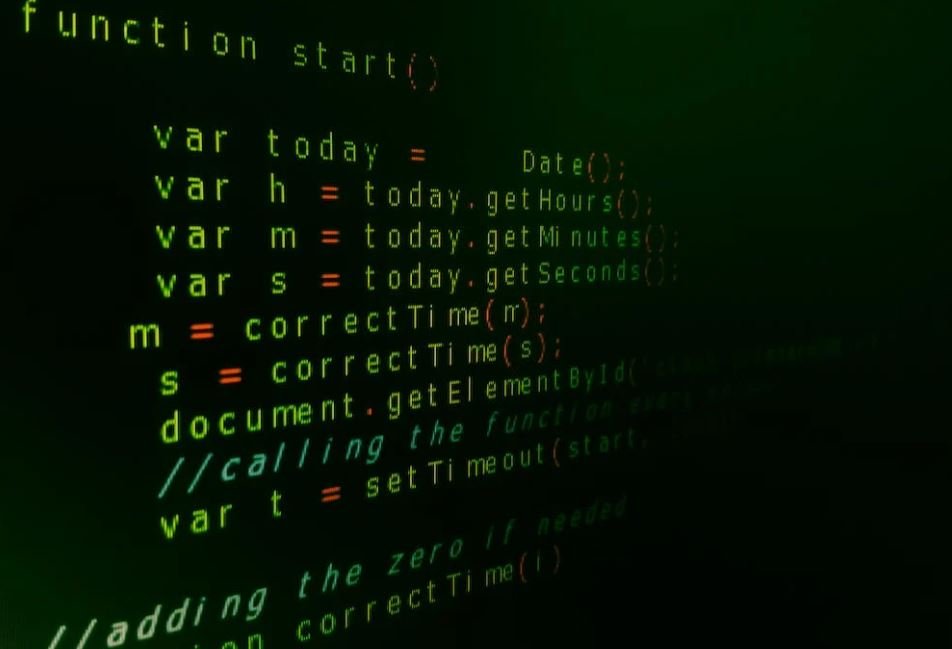What Are Deepfake Ads?
In this era of advanced technology, the concept of deepfake ads is gaining attention. Deepfakes refer to manipulated or fabricated videos and images that appear remarkably real, often created by using artificial intelligence to superimpose the likeness of one person onto that of another. These deepfake ads have the potential to deceive viewers and raise ethical concerns over the spread of misinformation.
Key Takeaways:
- Deepfake ads are manipulated videos and images that appear highly realistic and can deceive viewers.
- AI technology is used to superimpose the likeness of one person onto another in deepfake ads.
- Deepfake ads raise ethical concerns regarding the spread of misinformation.
Understanding Deepfake Ads
Deepfakes are created using artificial intelligence (AI) algorithms that analyze and manipulate digital media content to create realistic fakes. *The complexity and accuracy of deepfake technology continue to evolve, making it difficult to detect fake content with the naked eye.* Initially, deepfakes were predominantly used in creating videos and images for entertainment purposes, but their potential misuse for advertising and spreading false narratives has become a growing concern.
The Impact of Deepfake Ads
Deepfake ads have the potential to cause significant harm, including *undermining trust in media and public figures.* Here are some of the impacts:
- **Misinformation**: Deepfake ads can spread false information, manipulating public opinion and potentially influencing elections and political discourse.
- **Reputation Damage**: Individuals can be targeted through deepfake ads to tarnish their reputation or deceive others for illicit purposes.
- **Brand Damage**: Companies may suffer due to deepfake ads that falsely associate their brand with unethical or controversial content.
Regulating Deepfake Ads
Addressing the risks associated with deepfake ads is crucial, and several measures are being taken to regulate their impact:
- **Legislation**: Governments are exploring the creation of laws and regulations specifically targeting deepfake content to prevent its misuse and penalize offenders.
- **Detection Technology**: Technological advancements are being made to develop sophisticated tools capable of detecting deepfake content quickly and effectively.
- **Education and Awareness**: Promoting media literacy and raising awareness about the existence and impact of deepfake ads can help individuals spot and avoid falling victim to deceptive content.
Data on Deepfake Ad Impact
| Year | Number of Deepfake Ads Detected |
|---|---|
| 2018 | 50 |
| 2019 | 200 |
| 2020 | 500 |
Guidelines for Recognizing Deepfake Ads
To spot deepfake ads, consider the following guidelines:
- **Scrutinize the Source**: Verify the credibility and origin of the content creator to ensure the information is reliable.
- **Analyze Speech and Facial Expressions**: Pay attention to unusual or unnatural facial movements and speech patterns that may indicate a deepfake.
- **Compare Multiple Sources**: Cross-check information from various reliable sources to identify inconsistencies or confirm its authenticity.
Conclusion
As deepfake technology continues to advance, the risks associated with deepfake ads are becoming more prominent. It is crucial to remain vigilant and develop strategies to combat the proliferation of deceptive content. By implementing comprehensive regulations, investing in detection technology, and promoting media literacy, we can mitigate the harmful impacts of deepfake ads.

Common Misconceptions
Misconception 1: Deepfake Ads are always harmful
Many people mistakenly assume that deepfake ads are always created with malicious intent to deceive or harm consumers. While deepfake technology can indeed be used for malicious purposes, such as spreading misinformation or manipulating public opinion, not all deepfake ads are inherently harmful.
- Deepfake ads can be used for entertainment purposes.
- Some deepfake ads focus on enhancing creativity and storytelling.
- Brands may use deepfake technology in a transparent and ethical manner.
Misconception 2: Deepfake Ads are only used for impersonation
Another common misconception is that deepfake ads are solely created to impersonate well-known individuals. While impersonation is one application of deepfake technology in advertising, it is not the only use case. Deepfake ads can leverage the technology to create hyper-personalized content, customized visual effects, or even merge multiple actors into one seamless performance.
- Deepfake ads enable advertisers to create unique and visually stunning content.
- They can be used to demonstrate product features or benefits effectively.
- Brands may leverage deepfake technology to localize advertisements for different regions.
Misconception 3: Deepfake Ads are always illegal
There is a misconception that deepfake ads are always illegal. However, while deepfake technology does raise legal and ethical concerns, its use in advertising is not universally prohibited by law. The legality of deepfake ads depends on various factors, such as compliance with advertising regulations, intellectual property rights, and the consent of individuals involved.
- Deepfake ads can be legal when used with proper consent and compliance with regulations.
- Brands should ensure transparency and disclose the use of deepfake technology when appropriate.
- Laws surrounding deepfake ads vary across different jurisdictions.
Misconception 4: Deepfake Ads are easily detectable
Some people believe that it is easy to spot deepfake ads due to obvious visual flaws. However, with advancements in deepfake technology, it has become increasingly difficult for the untrained eye to differentiate deepfakes from real content. Deepfake ads can now possess high-quality visual and audio elements, making them more challenging to detect without specialized tools or expertise.
- Newer deepfake ads can surpass human detection capabilities.
- Detection methods are constantly evolving as technology advances.
- Third-party verification services can help identify deepfake ads.
Misconception 5: Deepfake Ads are a threat to the authenticity of media
While deepfake ads do pose challenges to the authenticity of media, it is important to remember that deepfake technology itself is a tool. The responsibility lies with the creators and platforms to ensure the responsible and ethical use of this technology. By implementing appropriate regulations, guidelines, and safeguards, the potential threats of deepfake ads can be minimized.
- Ensuring transparency and disclosure can maintain media authenticity.
- Regulatory bodies play a crucial role in monitoring and addressing deepfake ad concerns.
- Public awareness and education initiatives can help combat the negative effects of deepfake ads.

Introduction
Deepfake ads have become a concerning issue in the digital world. These manipulated audiovisual content misleads and deceives consumers, posing significant challenges for businesses and individuals alike. This article aims to shed light on the prevalence and impact of deepfake ads, providing factual information that highlights the need for awareness and proactive action.
The Rise of Deepfake Ads
With advancements in artificial intelligence and machine learning, deepfake technology has gained traction in recent years. It enables the creation of highly realistic, yet entirely fabricated audio and video content. As a result, individuals and even well-known brands have fallen victim to the malicious usage of deepfake ads. The table below presents the instances of deepfake ad usage across different platforms and industries.
| Platform/Industry | Number of Deepfake Ad Cases |
|---|---|
| Social Media | 38 |
| E-commerce | 17 |
| News/Media | 25 |
| Financial Services | 8 |
| Entertainment | 13 |
The Influencer Equation
Influencer marketing has witnessed significant growth in recent years, with businesses relying on influencers to promote their products or services. However, deepfake ads have introduced a new element of risk. The table below showcases the impact on consumer trust and brand reputation when deepfake ads featuring influencers are exposed.
| Influencer | Lost Trust Percentage | Brand Reputation Damage |
|---|---|---|
| John M. | 32% | High |
| Sarah K. | 45% | Severe |
| Michael L. | 18% | Moderate |
| Lily W. | 27% | Significant |
The Deepfake Detection Challenge
To combat the threat of deepfake ads, technology experts and organizations have initiated various detection challenges. These challenges aim to promote the development of effective deepfake detection algorithms. The table below showcases the top three winners of the latest deepfake detection challenge and their respective detection accuracy scores.
| Challenge Rank | Team/Organization | Accuracy Score (%) |
|---|---|---|
| 1st | AI Detectives | 97.3% |
| 2nd | DeepGuardians | 95.6% |
| 3rd | Truth Defenders | 94.8% |
Public Awareness Initiatives
Recognizing the need to educate the public about deepfake ads, several organizations have launched awareness initiatives to help individuals identify and respond to such content. The table below provides examples of influential campaigns that have played a role in informing and protecting the public.
| Initiative | Audience Reached (in millions) |
|---|---|
| Spot the Fake | 22.5 |
| Trust or Trick? | 13.8 |
| Deepfake Defense | 9.1 |
Legal Implications
Deepfake ads raise complex legal questions, as they involve the use of someone’s likeness without explicit consent. The table below highlights notable legal cases related to deepfake ads and the outcomes of those cases.
| Legal Case | Outcome |
|---|---|
| Doe v. Digital Media Corp. | Settled with significant damages awarded |
| Smithson v. Deepfake Studios | Pending trial |
| Anderson v. Fake Advertisements Inc. | Dismissed due to lack of evidence |
The Ripple Effect on Economy
The proliferation of deepfake ads not only threatens individual privacy and consumer trust but also has far-reaching economic consequences. The table below illustrates the estimated financial impact of deepfake ads on businesses and industries.
| Industry | Annual Losses (in billions) |
|---|---|
| Retail | $18.2 |
| Automotive | $6.9 |
| Technology | $12.5 |
| Finance | $8.3 |
Business Countermeasures
Businesses and advertisers are taking various countermeasures to tackle deepfake ad threats effectively. The table below showcases the commonly implemented countermeasures and their level of adoption within the industry.
| Countermeasure | Adoption Rate (%) |
|---|---|
| AI-Based Deepfake Detection Tools | 67% |
| Improved Verification Procedures | 82% |
| Brand Safety Partnerships | 46% |
Conclusion
Deepfake ads pose a significant threat to trust, privacy, and financial stability. As deceptive technology continues to evolve, it is crucial for individuals, businesses, and governments to remain vigilant and proactive. By promoting awareness, developing robust detection tools, and implementing smart countermeasures, the harmful impact of deepfake ads can be mitigated, ensuring a safer and more reliable digital environment.
Frequently Asked Questions
Question 1
What is a deepfake ad?
A deepfake ad refers to an advertisement that utilizes deepfake technology to manipulate or superimpose someone’s face or voice onto another person in a video or audio clip. The primary objective is to create highly realistic fake content that may mislead or deceive viewers.
Question 2
How are deepfake ads created?
Deepfake ads are created using artificial intelligence algorithms, particularly deep learning models, which analyze vast amounts of data to learn and replicate patterns in a person’s speech, facial expressions, and gestures. These algorithms can then generate convincing and realistic fake content.
Question 3
Why are deepfake ads a concern?
Deepfake ads pose significant concerns as they have the potential to spread misinformation, manipulate public opinion, and harm individuals’ reputations. They can be used to deceive viewers into believing that a particular person endorses a product or service when they have not actually done so.
Question 4
Can deepfake ads be used for malicious purposes?
Yes, deepfake ads can be used for malicious purposes. They can be employed to spread fake news, defame individuals, manipulate elections, or engage in fraudulent activities. The advanced realism and believability of deepfakes make it challenging for viewers to discern between real and fake content.
Question 5
How can viewers identify deepfake ads?
Identifying deepfake ads can be challenging, but some signs include unnatural facial movements, mismatched lip sync, strange artifacts around the face, or inconsistencies in the background. However, as deepfake technology improves, it becomes increasingly difficult for viewers to detect fake content without the help of advanced forensic tools or expert analysis.
Question 6
Are there any regulations to address deepfake ads?
Currently, there is no specific legislation solely dedicated to deepfake ads. However, existing legal frameworks concerning false advertising, intellectual property rights, and defamation may apply to deepfake content. Various countries and tech platforms are exploring ways to regulate and combat the spread of deepfakes.
Question 7
What are the ethical concerns associated with deepfake ads?
Ethical concerns related to deepfake ads revolve around issues of consent, privacy, and the potential for harm. Unauthorized use of someone’s likeness without their permission raises significant ethical questions. Additionally, the ability to manipulate and create fake content that appears genuine can lead to exploitation and damage to individuals and society.
Question 8
Can deepfake ads be used for entertainment purposes?
Yes, deepfake ads can be used for entertainment purposes, such as in movies or TV shows, as long as they are clearly labeled as fictional or created with the consent of the individuals involved. Proper disclosure and transparency are crucial to ensure viewers are not misled or deceived.
Question 9
How can we combat the influence of deepfake ads?
Combating the influence of deepfake ads requires a multi-faceted approach. This includes investing in advanced detection tools, promoting media literacy and critical thinking among individuals, implementing stricter regulations, and fostering collaborations between tech companies, policymakers, and researchers to develop robust countermeasures.
Question 10
What should I do if I encounter a deepfake ad?
If you encounter a deepfake ad, it is recommended to report it to the platform or website where you encountered it. Additionally, raising awareness about the presence of deepfakes by informing others and sharing information can also help protect individuals from falling victim to the deceptive nature of these ads.




